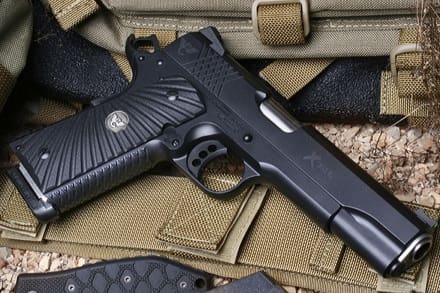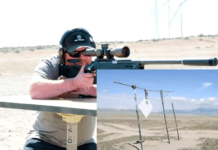http://www.youtube.com/watch?v=27CPBAJKQTU
Just got off the blower with John May. The Sales Manager at Wilson Combat has been promising to send TTAG a gun to review since the Wilson administration. Or thereabouts. Still, John’s got more stories than the Empire State building; the man is a world class shooter and yarn-spinner. At some point, I told John about a pal who’s getting back into guns after a fifteen year hiatus. He’s thinking about springing for a Wilson, but what Wilson? How do you spec-out a custom gun anyway? John didn’t want to be shoe-horned into a three-step process, but TTAG is nothing if not persistent . . .
1. What do you want the gun for?
“There are three basic uses,” John says. “Carry, competition and an all ’round gun. For carry, I recommend a 5″ lightweight ULC. People think they need a shorter barrel but the grip’s the bit you need to hide. A longer sight radius makes a gun easier to shoot. That’s pretty important in a carry gun.”
If you’re going to use the gun for competition, May recommends a speed shoot option, adjustable sights and a few other bells and whistles—which will work “just fine” on any of Wilson’s guns. “Our full-size CQB’s [above] already got on it most of what you want in a competition gun,” May says.
As for an all-round gun, May reckons it’s the CQB Elite. Not to coin a phrase, but it comes fully-loaded: serrations on the top and the rear of the slide; a U-notch pyramid rear sight with back-side serrations, checkered mainspring housing and front strap, and G-10 grips with a tapered cut-out around the semi-extended magazine release button.
When it comes to custom guns, you can have it all. All it takes is money.
2. What caliber?
Oh my LORD that’s a long discussion, similar in many ways to debating theology or Larry Bird’s place in the pantheon of basketball greats. Suffice it to say, May’s got a simple rule of thumb: “Nine and up will get it done.” If you think you could use a few more bullets and a bit less muzzle flip, even just for target practice, it’s nine and done.
3. Finish the job
Next, concentrate on the gun’s finish. Luckily, “once most people decide what the gun’s for, they know what they want it to look like,” May says. But after that, “people can get a little confused.”
No surprise there. There are a LOT of choices, from sights to checkering to trigger pull and beyond. When it comes to speccing out your gun, May says there’s no substitute for experience. If not your own, someone else’s.
“Custom gun companies are run by people who love to shoot. Some of them are pretty good at it too,” he adds modestly. “They can tell you what’ll work on a gun for what you want it to do, and what won’t. Just don’t worry about it too much. There’s not much you can get totally wrong, or that can’t be put right.”
True dat. And that means it’s OK to order a really expensive gun you’ve never even held in your hand. Really. The custom gun market is highly competitive. Gunmakers selling weapons over the $1000 mark know their business depends on word of mouth and repeat custom. They’ll do pretty much whatever it takes to make you happy.
If you’re dealing with the custom gun world’s heavy hitters (Wilson Combat, Ed Brown, Nighthawk Custom, STI International, Gemini Customs, etc.), they’ve got enough demand to find a home for most anything they make, new or used.
As long as you don’t do something stupid in the personalization department, custom guns tend to hold their value. Trading up or over will hurt, but it’ll be a graze in comparison to the trauma you would have experienced trying to off-load a mass market firearm.
At the end of the proverbial English day, a custom gun is a bit of a shot in the dark. But at this level, you’re far more likely to hit than miss.






